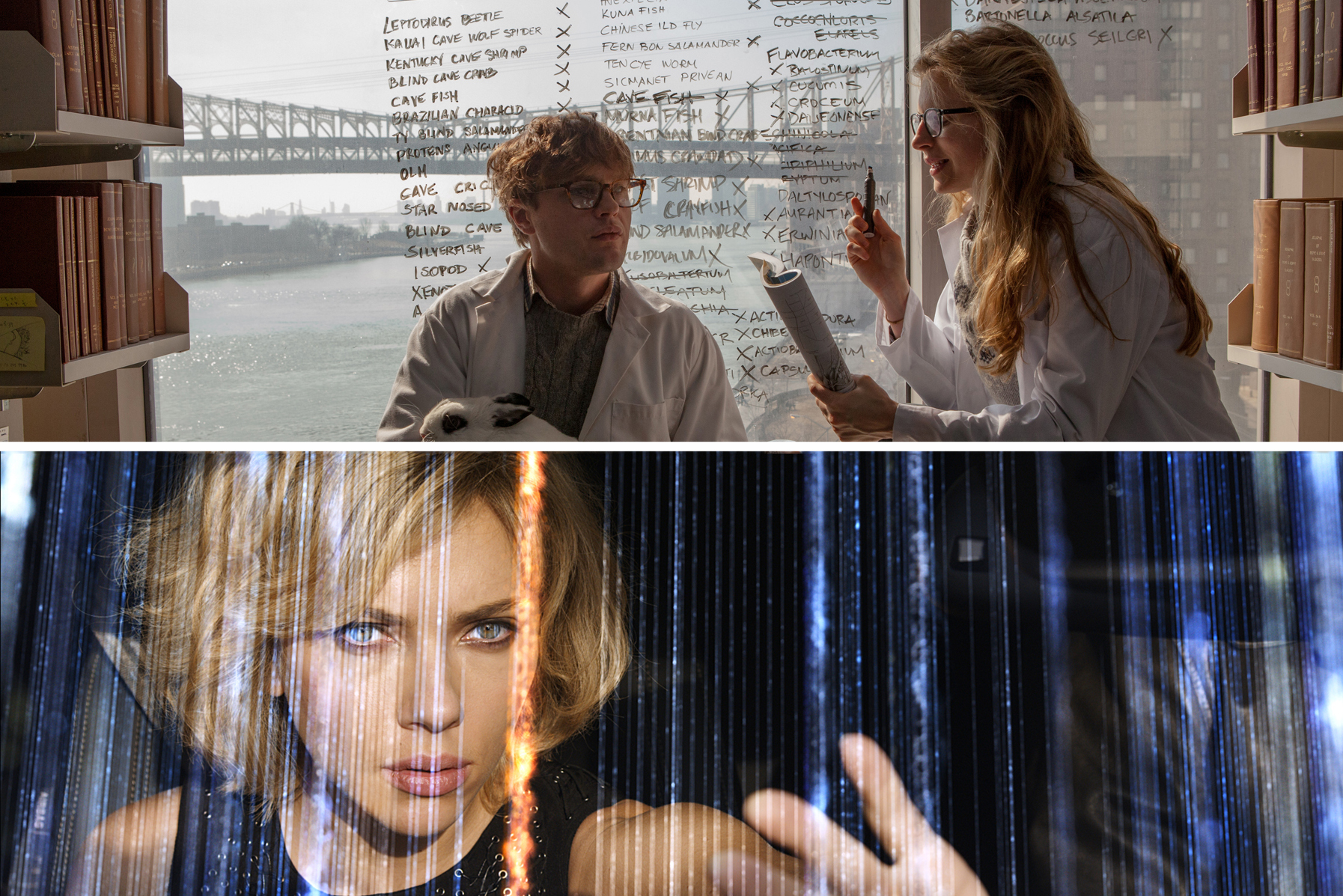
In 1985, the famous “Afghan Girl” photograph appeared on the cover of National Geographic. Her eyes captivated the world, but even the photographer, Steve McCurry, didn’t know her name. Nearly two decades later, the magazine announced that they had made a discovery: they knew her name, and they were sure. The woman’s identity had been confirmed by comparing a scan of the eyes in the photograph to an iris scan of her grown-up self; irises are as unique as fingerprints, and a “print” can be taken from a high-resolution photograph if the eye in question is not available.
“I thought this was a really beautiful story,” says filmmaker Mike Cahill, best known for Another Earth. “It felt like a great place to have the conversation between science and spirituality.”
He liked the story so much that it became the inspiration behind his new movie, I Origins, in theaters today. It’s a trippy tale of iris scans, love, genetics and — though Cahill was extremely careful never to say the word during the movie, so that viewers could draw their own conclusions — the possibility of reincarnation. In that, it’s an example of the way that movies can use science to get at the questions their creators care about.
And it’s not alone: Lucy, arriving in theaters next week, on July 25, takes a similar tack. Lucy, from writer/director Luc Besson, is an action-packed fable about a woman, played by Scarlett Johansson, who is, due to a series of unfortunate circumstances and a mysterious drug, able to harness the full power of her brain. Besson’s film was also born of a real-life interaction, a conversation with a young scientist he happened to sit next to at a dinner party. Besson says that he had always wanted to do a film about the concept of intelligence and that this was his chance; he could use some of the ideas from the conversation about the way cells work to say what he wanted to say about how knowledge is power.
“I like this combination, when the science leads to beauty or art or philosophy,” Besson tells TIME. “It’s something very unique and very beautiful.”
But where Cahill and Besson differ is in just how much actual science has to be in the scientific part.
Cahill stresses that the science of I Origins is all fact-based, from the particular genes mentioned to the international uses of iris biometrics to, he says, the theoretical possibility that we may have senses not yet detectable. He also wanted his scientist characters to be accurate representations, so he consulted with his brother, a molecular biologist, and brought the cast down to his brother’s lab at Johns Hopkins to do character research. Besson’s starting point, meanwhile, is famously nonfactual: the idea that humans walk around with 90% of their brains going unused so infuriates some neuroscience fans that they’ve sworn off the movie preemptively. But, though Besson says he did a lot of research before starting, he’s less concerned about those details. For him, the “scientific” part is less about facts than it is about a grounding in reality. For example, he objects to the characterization of Lucy, his heroine, as having super-strength or super powers; instead, he sees the film as a meditation on what might be possible if a person could make her mind and body do exactly what she wished. Staying away from a superhero-esque way of seeing it helps the movie make a point about something real, says Besson, who adds that at this point in his life he’s too old to make an action movie that doesn’t have a deeper meaning.
“Half of the things in the film are true. The other half is not true. But if you mix everything together, everything looks real,” he says. “It’s funny because today everybody knows that movies are fake, but in a way we’re in such a crisis that everyone is looking for a little piece of truth in it. Politicians are supposed to tell the truth and they’re lying all day long. Films are supposed to be fake and sometimes you get some truth.”
That relationship between fact and fiction explains why, even though Besson and Cahill don’t feel the same way about how factual their facts have to be, they both use science-y concepts to get at something that couldn’t be examined in a lab. For Cahill, it was that mysteriously romantic feeling of looking in someone’s eyes and feeling like you’ve known her forever. For Besson, it was the more theoretical question of what a person who can know everything should do with that power. For both, it was the idea that human beings may be capable of more than we know. That’s an end goal that may easier for audiences to swallow if it comes from a world that feels like it might be real — but, for Cahill and Besson, that doesn’t make it any less fantastic.
“It’s incredible to think about the fact that the sum total of human knowledge, everything that we know, expands every day, just like the universe,” says Cahill. “And the force behind that expansion is scientific discovery.”
More Must-Reads from TIME
- Introducing the 2024 TIME100 Next
- The Reinvention of J.D. Vance
- How to Survive Election Season Without Losing Your Mind
- Welcome to the Golden Age of Scams
- Did the Pandemic Break Our Brains?
- The Many Lives of Jack Antonoff
- 33 True Crime Documentaries That Shaped the Genre
- Why Gut Health Issues Are More Common in Women
Write to Lily Rothman at lily.rothman@time.com